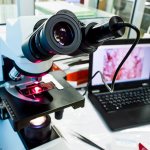
News • Lung cancer
A novel AI for digital pathology analysis
Researchers from Boston University School of Medicine have developed a novel artificial intelligence algorithm to assess digital pathology data.

Researchers from Boston University School of Medicine have developed a novel artificial intelligence algorithm to assess digital pathology data.

A new way of differentiating healthy from diseased cells could pave the way for more personalised treatment for patients diagnosed with glioblastoma multiforme (GBM), a common and aggressive type of brain tumour.
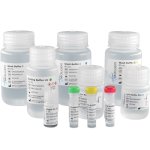
SARS-CoV-2 has heavily impacted global society with high pressure on public health and economics. MolGen is proud to assist in relieving some of the pressure and support the testing framework.

Liquid biopsy performed on serum samples taken from breast cancer patients can provide increasingly accurate information on progression and enable earlier detection of recurrence.

Scientists have discovered a means of identifying the risk of breast and ovarian cancer by measuring epigenetic changes in cervical samples from over a thousand women.

Mark Nicholls reports from the National Cancer Research Institute (NCRI) virtual Festival, with four expert speakers discussing the role of liquid biopsy in cancer detection.

A worldwide consortium aims to equip researchers in low- and middle-income countries (LMICs) with cheap and accessible methods for sequencing large collections of bacterial pathogens.
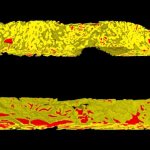
A team led by the University of Washington has developed a new, non-destructive method that images entire 3D biopsies instead of a slice. The 3D images provided more information than a 2D image — specifically, details about the tree-like structure of the glands throughout the tissue.
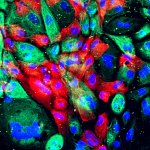
Researchers have found that regular blood tests can help detect whether prostate cancer patients have resistance to drugs treating the condition. The findings were presented at the National Cancer Research Institute (NCRI) virtual Festival.
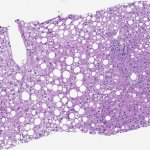
Professor Dina Tiniakos, from the National and Kapodistrian University of Athens, predicts that NASH (Non-alcohol related steatohepatitis) cases will soar worldwide by 2030, with 800,000 liver deaths, costing health economies billions of dollars.

Digital technology solutions create new opportunities in diagnosis and assessment of renal conditions. With whole slide imaging (WSI), improved workflow and better visualization, such technology already yields a ROI for hospitals and laboratories.

Digitisation offers great opportunities in pathology to work more efficiently and faster. Used correctly, it reduces the workload for both pathologists and laboratory staff.
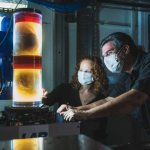
The damage caused by Covid-19 to the lungs’ smallest blood vessels has been intricately captured using high-energy X-rays emitted by a special type of particle accelerator. Scientists used a new imaging technology called Hierarchical Phase-Contrast Tomography (HiP-CT), to scan donated human organs, including lungs from a Covid-19 donor.

Mass spectrometry – a powerful tool for analysing the molecular composition of a tissue sample – is invaluable during cancer surgery. However, mass spectrometers are complex and unwieldy, and certainly a poor fit for an operating room (OR). To create a bridge between the lab and OR, Professor Livia S Eberlin, from Baylor College of Medicine, has developed a very special ‘pen’.

Post-mortem CT (PMCT) increasingly supports pathologists, radiologists and forensic investigators particularly in cases of gunshot fatalities, mass casualties, decomposed and concealed bodies, fire deaths, diving deaths, non-accidental injury cases, and road traffic deaths, in which CT can indicate a pattern of injuries. In Dublin this August, the post-mortem (autopsy) technique was discussed…

The impact of the coronavirus pandemic on lung cancer patient care across Europe, and the contribution lung pathologists, have led to a better understanding of Covid-19, as outlined during the 33rd European Congress of Pathology, Within ‘The lung pathologist in the Covid-19 pandemic’ session, speakers detailed how the pandemic has affected patients, diagnosis and clinical trials, yet also…

Researchers at Karolinska Institutet have developed an AI-based tool that improves the diagnosis of breast cancer tumours and the ability to predict the risk of recurrence. The greater diagnostic precision can lead to more personalised treatment for the large group of breast cancer patients with intermediate risk tumours. The results are published in the scientific journal Annals of Oncology.
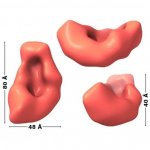
Small aggregates of proteins known as Aβ oligomers are suspected as the main cause for the development of Alzheimer’s disease. However, it is not yet clear where and under what conditions these toxic aggregates form.

Molecular pathology company Xyall BV launches its Tissector High Throughput (HT) system for precision diagnostics. This is a world first – enabling high volume, molecular diagnostic laboratories to capitalize commercially on the company’s automated tissue dissection technology.
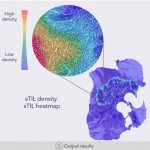
A researcher at the Technical University of Denmark (DTU) has developed a mathematical model for use in automated image analysis of tissue samples. The model provides the possibility for better and more similar cancer prognosis and treatment.

SpeeDx Pty, Ltd. and MolGen announced the signing of an agreement to collaborate on supply and distribution of clinical diagnostics products and instrumentation across Europe and Asia Pacific. The partnership links specimen handling, nucleic acid extraction, assay set-up, amplification, and results reporting in a seamless integration of the companies technologies. “This partnership capitalises…

Did you know that changing microscopy camera can make a real difference to your microscopy workflow? Packed full of smart features to make your imaging faster and easier, Olympus’ new DP23 and DP28 (4K) cameras enable streamlined, comfortable sample analyses at the monitor and easier, smoother conferencing. Get the most out of the monitor view and discover the many benefits of the DP23 and DP28…
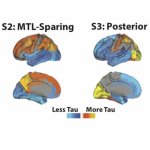
Alzheimer's disease is characterized by the abnormal accumulation and spread of the tau protein in the brain. An international study can now show how tau spreads according to four distinct patterns that lead to different symptoms with different prognoses of the affected individuals. The study was published in Nature Medicine.

Skin swab samples analysed using mass spectrometry could be used to detect Covid-19 in patients, according to research conducted at the University of Surrey in the UK. Current Covid-19 testing is via a polymerase chain reaction (PCR) test, which involves taking a swab of the back of the throat and inside the nose, but the team from Surrey - working with Frimley NHS Trust and the Universities of…
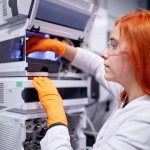
Researchers from Charité – Universitätsmedizin Berlin and the Francis Crick Institute have developed a mass spectrometry-based technique capable of measuring samples containing thousands of proteins within just a few minutes. It is faster and cheaper than a conventional blood count. To demonstrate the technique’s potential, the researchers used blood plasma collected from Covid-19 patients.…